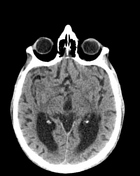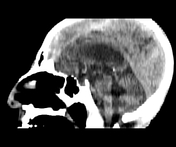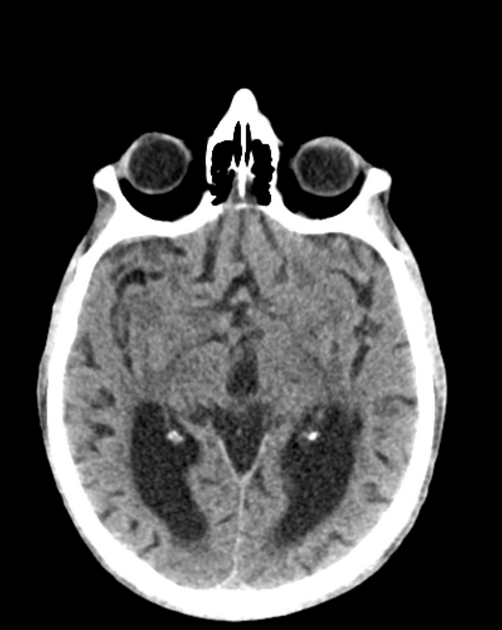Presentation
Classical clinical presentation of urinary incontinence and gait disturbances.
Patient Data
Age: 90 years
Gender: Male
From the case:
Normal pressure hydrocephalus




Download
Info

Enlarged lateral and third ventricles out of proportion to the cortical sulcal enlargement, upward bowing of the corpus callosum and periventricular hypodensities. No CT detectable obstructive lesion in the course of ventricular system.
Case Discussion
The classical clinical presentation of normal pressure hydrocephalus are urinary incontinence, deterioration in cognition (dementia), and gait disturbances.
Imaging can show enlargement of lateral and third ventricles out of proportion to the cortical sulcal enlargement.




 Unable to process the form. Check for errors and try again.
Unable to process the form. Check for errors and try again.